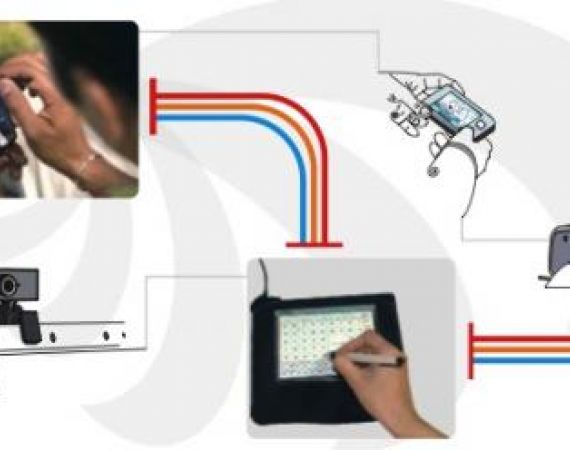Posted on Wed 4 Nov 2009
Researching the next billion: technology for the digitally disadvantaged
The two companies we have visited who have excited me most (perhaps inevitably) are Nokia Research and HP Labs India in Bangalore, both of who are concentrating on finding ways to enable digitally disadvantaged people

HP Labs' Intuitive Multimodal and Gestural Interaction research
Posted by

Clare Reddington
Clare is the CEO of Watershed and a Visiting Professor at University of the West of England.The two companies we have visited who have excited me most (perhaps inevitably) are Nokia Research and HP Labs India in Bangalore, both of who are concentrating on finding ways to enable digitally disadvantaged people (the illiterate and those who can't afford internet) to access the online services we now often take for granted. Yes, both are obviously looking for new markets, but as HP's website puts it "a large majority of these new customers arise from rapidly growing markets such as India with distinct technological, social and economic characteristics. By understanding this context deeply, HP Labs aims to create new and relevant technologies."
At HP Labs we were met by Rama Vennelakanti, a user researcher who explained their three mains areas of research; Simplifying Web Access; Intuitive Multimodal and Gestural Interaction and Paper in the Digital Enterprise. The larger team then demo'd some projects (a few of which i had seen on my previous visit to the Bangalore labs), including:
Document Authentication System
Addresses the problem of document authentication to overcome fraud and forgery. It was demonstrated using a university degree certificate that contained a special 2d barcode. Potential employers can scan the barcode on the certificate in, go online, select the image they have scanned and the web based software will show them what the certificate should look like, so they see if there has been any tampering.
Gesture Keyboard
A unique device for entering phonetic scripts like Hindi which often need three of four key strokes to enter one character. Using a pen and a touch screen, users click a character and then draw the moderations on to it, achieving a speed of 10 words per minute with just 2 hours of practice. Currently being deployed in various government organizations and information kiosks.
The one I was most excited about is new so there are no details currently online. Called Site on Mobile, the project allows businesses to create widgets that enable anyone to perform speech to text interactions with their websites. The business define the actions/paths a user might take on their sites. Users can then text or phone in to accomplice the same tasks as people using the sites on the internet. I can see that this might have some useful potential in some of Connecting Bristol's work, so will ask for some more details.
At Nokia Research Centre we were met by lead researcher Jan Blom who walked us through some of their projects. The team deploy user-centric methods and technology exploration across a multidisciplinary team (with a strong emphasis on Indianness). Nokia have a clear lead in India (60 - 70% of the market) but many of their consumers can't read or write and live below the poverty line, so like HP Labs they are looking at text free interfaces, developing new products in India that can be rolled out globally.
Research includes:
- Studies of how cyber cafes are used in India and how media is consumed and distributed amongst low income Indians
- Gaming and eduction - the centre has ported MIT's scratch environment to mobile for children to use to design games in schools
- Security in an urban context. What triggers female perceptions of fear in urban spaces and how can mobile phones be used to make people feel and act safer?
- Health radar (their most advanced project), enables the collection of information about diseases using affordable phones. With massive potential for grass roots health products there is an active pilot running in a malaria prone area of Karnataka. They have proved it is possible to collect thisw kind of data and are now seeking to establish the value of the tool and explore consumer facing applications.
Without waxing lyrical, both companies are working with technologies that have the potential to change lives and increase well being. I feel that the UK (especially around Digital Britain) could learn a lot and pick up transferable technologies from some of the research being undertaken in India.